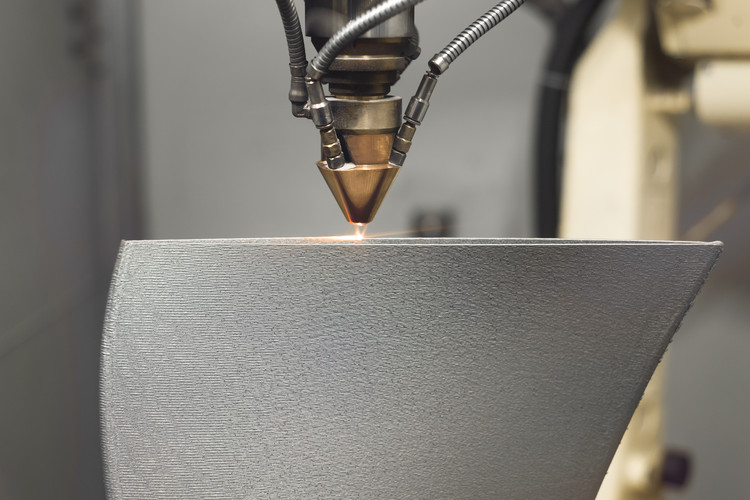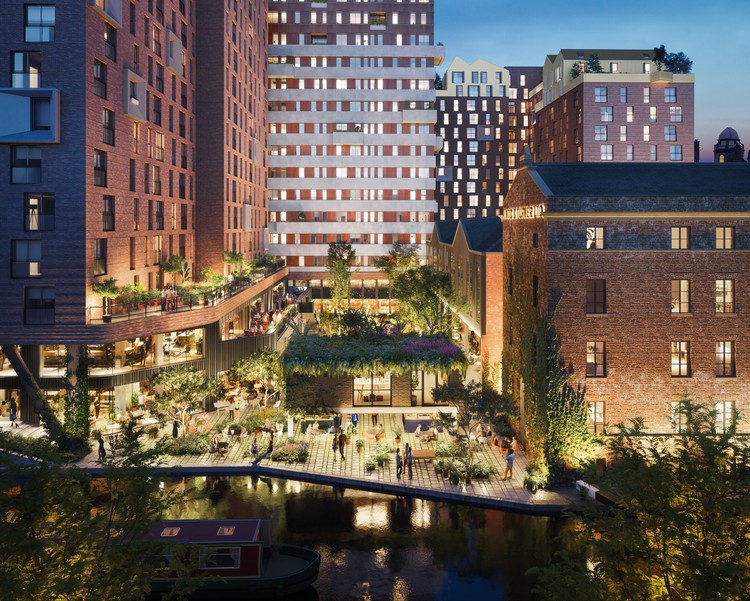
A guide from Graphisoft on how to create powerful design presentations with Archicad through the use of Archicad version 25.


A guide from Graphisoft on how to create powerful design presentations with Archicad through the use of Archicad version 25.

The inaugural Obel Award has been awarded to Art Biotop Water Garden by Junya Ishigami+Associates. Announced at a ceremony at the Utzon Center in Aalborg, Denmark, the award recognizes architectural achievement and is presented annually by The Henrik Frode Obel Foundation. The prize is 100,000 Euros and an artwork by leading artist Tomás Saraceno.

City of the Future is a bi-weekly podcast from Sidewalk Labs that explores ideas and innovations that will transform cities.
In the second episode from season 2, hosts Eric Jaffe and Vanessa Quirk discuss the future of retail with author Mark Pilkington, social entrepreneur Sarah Filley, Sidewalk Labs’ Director of Development Carrie Jackson, and others.
_OMA.jpg?1571676595)
Led by Iyad Alsaka, Reinier de Graaf, Jad Semaan, and Adrianne Fisher, OMA’s proposal was selected as the winning entry for a residential project on Kuwait City’s waterfront. In collaboration with local partner Kuwait-based consultant Pace, The Wafra tower will be OMA's first venture in the country upon its completion.

As one of the founding members of Archigram, the avant-garde neo-futurist architecture group of the 1960s, the British architect, professor, and writer Sir Peter Cook (born 22 October 1936) has been a pivotal figure within the global architectural world for over half a century; one of his most significant works from his time with Archigram, The Plug-In City, still invokes debates on technology and society, challenging standards of architectural discourse today.

Oscar Niemeyer was a revolutionary of modernism, with an architectural language characterized by audacious curves and elaborated structures. The Brazilian architect established an architectural vision of a future utopian Brazil, one that ultimately has not come to pass. While public attention is often drawn to his masterpieces in Brasília, somewhat hidden from the architectural discourse is a house that Niemeyer designed for himself; a colonial-style scheme offering a radical departure from the expressive forms of his more noted works.

Every holiday season, architects, designers, and urban planners set up vibrant installations in cities around the world, to serve as beacons of joy and interactive points of attraction. On the 18th of November, Hou de Sousa will install Ziggy in New York City to celebrate the upcoming holiday season with vibrant hues and playful gateways.

The rapidly growing cancer care provider uses big-name architects and designers to create comfortable, hospitable spaces.
Since the first Maggie’s Centre opened in Edinburgh in 1996, the innovative psychological and social support facilities for people with cancer and their caregivers, friends, and families have been designed and built at an impressive clip.

Sir Christopher Wren (20 October 1632 – 25 February 1723) is one the most significant architects in British history, and was a recognized astronomer, scholar, and physicist-mathematician. Wren was classically trained at the University of Oxford in physics and engineering where he developed his interest in architecture. He is perhaps most famous for designing London's iconic St Paul's Cathedral, however he is credited with the design of dozens of other churches, government buildings, and hospitals in England. Wren was knighted in 1673.

Design:ED Podcast is an inside look into the field of architecture told from the perspective of individuals that are leading the industry. This motivational series grants unique insight into the making of a successful design career, from humble beginnings to worldwide recognition. Every week, featured guests share their personal highs and lows on their journey to success, that is sure to inspire audiences at all levels of the industry. Listening to their stories will provide a rare blueprint for anyone seeking to advance their career, and elevate their work to the next level.
In this episode, host Aaron Prinz speaks with Carla Swickerath, Partner at Studio Daniel Libeskind, about how she helped lead the development of the World Trade Center site, the impact of technology on the future of the profession, and what sets Studio Libeskind apart from other firms.

The Environmental Protection Agency estimates that Americans spend 90 percent of their time indoors. Spending that much time inside makes us feel disconnected from the outside world, affecting everything from our productivity to mental health. Not to mention physical health concerns ranging from poor circulation to airborne contaminants.
One method of rebuilding our connection to nature is by using living elements. Live moss wellness walls utilize one of our oldest plant species to improve the visual appearance of any interior environment and boost your overall well-being.

What happens when the sensor-imbued city acquires the ability to see – almost as if it had eyes? Ahead of the 2019 Shenzhen Biennale of Urbanism\Architecture (UABB), titled "Urban Interactions," ArchDaily is working with the curators of the "Eyes of the City" section at the Biennial to stimulate a discussion on how new technologies – and Artificial Intelligence in particular – might impact architecture and urban life. Here you can read the “Eyes of the City” curatorial statement by Carlo Ratti, the Politecnico di Torino and SCUT.
When the city has eyes to see, it will become the stuff of nightmares. The panopticon prophecy will come to life. Democracy will die.
The pretexts through which a thousand mechanisms that spy on us have been introduced into cities are three:

Additive Manufacturing (AM) is a term used to identify the manufacturing processes performed by 3D printing through layer-by-layer construction. In addition to avoiding the generation of waste through the use of precise geometries and exact quantities of material, these controlled processes can be much faster than traditional ones, since they don't require tools or other instruments.
Additive Manufacturing is done based on a digital model. The process begins with a CAD design or three-dimensional scan and then translates that shape into an object divided into sections, allowing it to be printed. Its use has extended from industrial design to the replica of archaeological objects to the manufacture of artificial human organs and tissues, among many others.

Materials and technology come together in new spaces and experiences. When looking to innovations in advanced construction, the Institute for Computational Design (ICD) and the Institute of Building Structures and Structural Design (ITKE), together with students at the University of Stuttgart, have been creating a series of experimental pavilion for many years. These structures tell a story of computational design and computer-aided manufacturing processes for advanced construction.
Open More Doors is a section by ArchDaily and the MINI Clubman that takes you behind the scenes of the world’s most innovative offices through exciting video interviews and an exclusive photo gallery featuring each studio’s workspace.
This month, we talked with American architecture and urban design firm Studio Gang and how their Chicago office focuses on ecological biodiversity, collaborative multidisciplinary projects, and finding potential in historic structures.

RIBA announced the 2020 RIBA International Prize jury and stated that it will be led by French architect and urban planner Odile Decq with the participation of Es Devlin, Jeanne Gang, Rossana Hu, and Gustavo Utrabo.

Part of the Mission Rock master plan in San Francisco, MVRDV unveiled their contribution, in partnership with Perry Architects, a 23-story mixed-use building, including offices and residential units. The firm joins other big names like Studio Gang, Henning Larsen, and WORKac in designing one of the vertical entities in this waterfront.

Dutch design practice Mecanoo has designed a new neighborhood currently under construction in Manchester. Called KAMPUS, the developed is located at the former Manchester Metropolitan University campus in the heart of the city. As a melting pot of buildings and spaces, KAMPUS was made to celebrate the vibrancy and diversity of the city with respect to the historic quality of Canal Street.

Alejandro Zaera-Polo (born October 17th 1963) is an internationally recognized architect and scholar, and founder of London, Zurich, and Princeton-based firm Alejandro Zaera-Polo & Maider Llaguno Architecture (AZPML). First rising to prominence in the 1980s with his writings for publications such as El Croquis, Zaera-Polo has had a prolific career in both the academic and professional realms of architecture.

The first phase of the planning vision for Mission Rock in San Francisco was initiated. The masterplan developed by the San Francisco Giants and Tishman Speyer put in place four buildings designed by internationally renowned architecture firms MVRDV, Studio Gang, Henning Larsen, and WORKac. The scheme also includes a 5-acre waterfront park by SCAPE.

People often find themselves physically and emotionally comfortable in specific public places. Whether one's reading a book on the terrace of a coffee shop, sitting on a cozy sofa at a hair salon, or waiting for the train at train station, some spaces tend to initiate a feeling identical to being in the comfort of one's home.
The field of environmental psychology has helped find the factors that achieve "human comfort", and now, architects and designers are working alongside the field's specialists to develop comfortable spaces.

Between advances in autonomous technology and urban population growth, transit is being reimagined on the street and in the air. From public transit transforming to more user-centric mobility services, to rethinking regulatory and organizational status quos, advances in technology are expanding transit opportunities in cities around the world.

The second machine age, gender-based violence, global south, developing cities, poor infrastructure, influx, digitization, sustainability, Afro-futurism? We keep hearing the buzzwords over and over again but what does it all mean? How do these notions intersect spatially in response to the needs of future city developments? Cities are like ecosystems, collectively dependent on the surrounding environment. The larger and more complex they become, the greater the pressures and repercussions, namely: population growth, urban expansion, and physical resource scarcity.